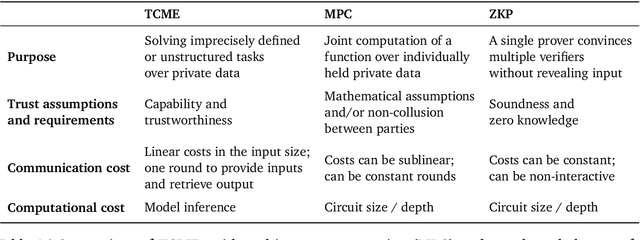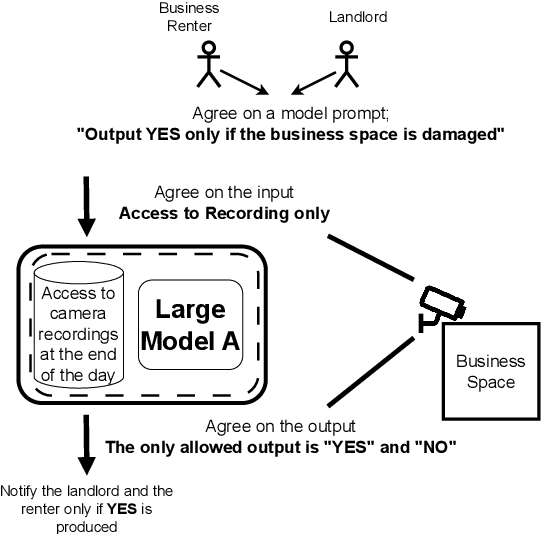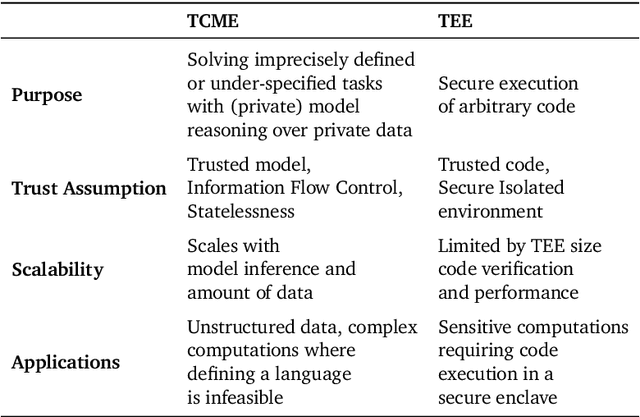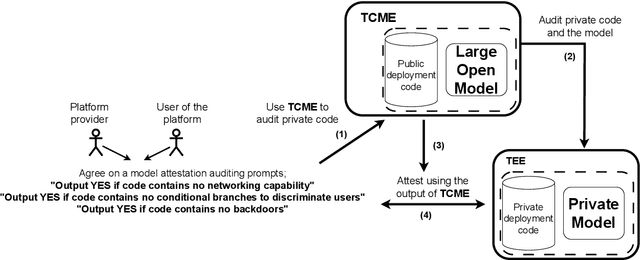Ilia Shumailov
Beyond Laplace and Gaussian: Exploring the Generalized Gaussian Mechanism for Private Machine Learning
Jun 14, 2025Abstract:Differential privacy (DP) is obtained by randomizing a data analysis algorithm, which necessarily introduces a tradeoff between its utility and privacy. Many DP mechanisms are built upon one of two underlying tools: Laplace and Gaussian additive noise mechanisms. We expand the search space of algorithms by investigating the Generalized Gaussian mechanism, which samples the additive noise term $x$ with probability proportional to $e^{-\frac{| x |}{\sigma}^{\beta} }$ for some $\beta \geq 1$. The Laplace and Gaussian mechanisms are special cases of GG for $\beta=1$ and $\beta=2$, respectively. In this work, we prove that all members of the GG family satisfy differential privacy, and provide an extension of an existing numerical accountant (the PRV accountant) for these mechanisms. We show that privacy accounting for the GG Mechanism and its variants is dimension independent, which substantially improves computational costs of privacy accounting. We apply the GG mechanism to two canonical tools for private machine learning, PATE and DP-SGD; we show empirically that $\beta$ has a weak relationship with test-accuracy, and that generally $\beta=2$ (Gaussian) is nearly optimal. This provides justification for the widespread adoption of the Gaussian mechanism in DP learning, and can be interpreted as a negative result, that optimizing over $\beta$ does not lead to meaningful improvements in performance.
Cascading Adversarial Bias from Injection to Distillation in Language Models
May 30, 2025Abstract:Model distillation has become essential for creating smaller, deployable language models that retain larger system capabilities. However, widespread deployment raises concerns about resilience to adversarial manipulation. This paper investigates vulnerability of distilled models to adversarial injection of biased content during training. We demonstrate that adversaries can inject subtle biases into teacher models through minimal data poisoning, which propagates to student models and becomes significantly amplified. We propose two propagation modes: Untargeted Propagation, where bias affects multiple tasks, and Targeted Propagation, focusing on specific tasks while maintaining normal behavior elsewhere. With only 25 poisoned samples (0.25% poisoning rate), student models generate biased responses 76.9% of the time in targeted scenarios - higher than 69.4% in teacher models. For untargeted propagation, adversarial bias appears 6x-29x more frequently in student models on unseen tasks. We validate findings across six bias types (targeted advertisements, phishing links, narrative manipulations, insecure coding practices), various distillation methods, and different modalities spanning text and code generation. Our evaluation reveals shortcomings in current defenses - perplexity filtering, bias detection systems, and LLM-based autorater frameworks - against these attacks. Results expose significant security vulnerabilities in distilled models, highlighting need for specialized safeguards. We propose practical design principles for building effective adversarial bias mitigation strategies.
Machine Learning Models Have a Supply Chain Problem
May 28, 2025Abstract:Powerful machine learning (ML) models are now readily available online, which creates exciting possibilities for users who lack the deep technical expertise or substantial computing resources needed to develop them. On the other hand, this type of open ecosystem comes with many risks. In this paper, we argue that the current ecosystem for open ML models contains significant supply-chain risks, some of which have been exploited already in real attacks. These include an attacker replacing a model with something malicious (e.g., malware), or a model being trained using a vulnerable version of a framework or on restricted or poisoned data. We then explore how Sigstore, a solution designed to bring transparency to open-source software supply chains, can be used to bring transparency to open ML models, in terms of enabling model publishers to sign their models and prove properties about the datasets they use.
* 12 pages, four figures and one table
Strong Membership Inference Attacks on Massive Datasets and (Moderately) Large Language Models
May 24, 2025Abstract:State-of-the-art membership inference attacks (MIAs) typically require training many reference models, making it difficult to scale these attacks to large pre-trained language models (LLMs). As a result, prior research has either relied on weaker attacks that avoid training reference models (e.g., fine-tuning attacks), or on stronger attacks applied to small-scale models and datasets. However, weaker attacks have been shown to be brittle - achieving close-to-arbitrary success - and insights from strong attacks in simplified settings do not translate to today's LLMs. These challenges have prompted an important question: are the limitations observed in prior work due to attack design choices, or are MIAs fundamentally ineffective on LLMs? We address this question by scaling LiRA - one of the strongest MIAs - to GPT-2 architectures ranging from 10M to 1B parameters, training reference models on over 20B tokens from the C4 dataset. Our results advance the understanding of MIAs on LLMs in three key ways: (1) strong MIAs can succeed on pre-trained LLMs; (2) their effectiveness, however, remains limited (e.g., AUC<0.7) in practical settings; and, (3) the relationship between MIA success and related privacy metrics is not as straightforward as prior work has suggested.
Architectural Backdoors for Within-Batch Data Stealing and Model Inference Manipulation
May 23, 2025Abstract:For nearly a decade the academic community has investigated backdoors in neural networks, primarily focusing on classification tasks where adversaries manipulate the model prediction. While demonstrably malicious, the immediate real-world impact of such prediction-altering attacks has remained unclear. In this paper we introduce a novel and significantly more potent class of backdoors that builds upon recent advancements in architectural backdoors. We demonstrate how these backdoors can be specifically engineered to exploit batched inference, a common technique for hardware utilization, enabling large-scale user data manipulation and theft. By targeting the batching process, these architectural backdoors facilitate information leakage between concurrent user requests and allow attackers to fully control model responses directed at other users within the same batch. In other words, an attacker who can change the model architecture can set and steal model inputs and outputs of other users within the same batch. We show that such attacks are not only feasible but also alarmingly effective, can be readily injected into prevalent model architectures, and represent a truly malicious threat to user privacy and system integrity. Critically, to counteract this new class of vulnerabilities, we propose a deterministic mitigation strategy that provides formal guarantees against this new attack vector, unlike prior work that relied on Large Language Models to find the backdoors. Our mitigation strategy employs a novel Information Flow Control mechanism that analyzes the model graph and proves non-interference between different user inputs within the same batch. Using our mitigation strategy we perform a large scale analysis of models hosted through Hugging Face and find over 200 models that introduce (unintended) information leakage between batch entries due to the use of dynamic quantization.
Lessons from Defending Gemini Against Indirect Prompt Injections
May 20, 2025Abstract:Gemini is increasingly used to perform tasks on behalf of users, where function-calling and tool-use capabilities enable the model to access user data. Some tools, however, require access to untrusted data introducing risk. Adversaries can embed malicious instructions in untrusted data which cause the model to deviate from the user's expectations and mishandle their data or permissions. In this report, we set out Google DeepMind's approach to evaluating the adversarial robustness of Gemini models and describe the main lessons learned from the process. We test how Gemini performs against a sophisticated adversary through an adversarial evaluation framework, which deploys a suite of adaptive attack techniques to run continuously against past, current, and future versions of Gemini. We describe how these ongoing evaluations directly help make Gemini more resilient against manipulation.
Watermarking Needs Input Repetition Masking
Apr 16, 2025Abstract:Recent advancements in Large Language Models (LLMs) raised concerns over potential misuse, such as for spreading misinformation. In response two counter measures emerged: machine learning-based detectors that predict if text is synthetic, and LLM watermarking, which subtly marks generated text for identification and attribution. Meanwhile, humans are known to adjust language to their conversational partners both syntactically and lexically. By implication, it is possible that humans or unwatermarked LLMs could unintentionally mimic properties of LLM generated text, making counter measures unreliable. In this work we investigate the extent to which such conversational adaptation happens. We call the concept $\textit{mimicry}$ and demonstrate that both humans and LLMs end up mimicking, including the watermarking signal even in seemingly improbable settings. This challenges current academic assumptions and suggests that for long-term watermarking to be reliable, the likelihood of false positives needs to be significantly lower, while longer word sequences should be used for seeding watermarking mechanisms.
Defeating Prompt Injections by Design
Mar 24, 2025Abstract:Large Language Models (LLMs) are increasingly deployed in agentic systems that interact with an external environment. However, LLM agents are vulnerable to prompt injection attacks when handling untrusted data. In this paper we propose CaMeL, a robust defense that creates a protective system layer around the LLM, securing it even when underlying models may be susceptible to attacks. To operate, CaMeL explicitly extracts the control and data flows from the (trusted) query; therefore, the untrusted data retrieved by the LLM can never impact the program flow. To further improve security, CaMeL relies on a notion of a capability to prevent the exfiltration of private data over unauthorized data flows. We demonstrate effectiveness of CaMeL by solving $67\%$ of tasks with provable security in AgentDojo [NeurIPS 2024], a recent agentic security benchmark.
Interpreting the Repeated Token Phenomenon in Large Language Models
Mar 11, 2025



Abstract:Large Language Models (LLMs), despite their impressive capabilities, often fail to accurately repeat a single word when prompted to, and instead output unrelated text. This unexplained failure mode represents a vulnerability, allowing even end-users to diverge models away from their intended behavior. We aim to explain the causes for this phenomenon and link it to the concept of ``attention sinks'', an emergent LLM behavior crucial for fluency, in which the initial token receives disproportionately high attention scores. Our investigation identifies the neural circuit responsible for attention sinks and shows how long repetitions disrupt this circuit. We extend this finding to other non-repeating sequences that exhibit similar circuit disruptions. To address this, we propose a targeted patch that effectively resolves the issue without negatively impacting the model's overall performance. This study provides a mechanistic explanation for an LLM vulnerability, demonstrating how interpretability can diagnose and address issues, and offering insights that pave the way for more secure and reliable models.
Trusted Machine Learning Models Unlock Private Inference for Problems Currently Infeasible with Cryptography
Jan 15, 2025



Abstract:We often interact with untrusted parties. Prioritization of privacy can limit the effectiveness of these interactions, as achieving certain goals necessitates sharing private data. Traditionally, addressing this challenge has involved either seeking trusted intermediaries or constructing cryptographic protocols that restrict how much data is revealed, such as multi-party computations or zero-knowledge proofs. While significant advances have been made in scaling cryptographic approaches, they remain limited in terms of the size and complexity of applications they can be used for. In this paper, we argue that capable machine learning models can fulfill the role of a trusted third party, thus enabling secure computations for applications that were previously infeasible. In particular, we describe Trusted Capable Model Environments (TCMEs) as an alternative approach for scaling secure computation, where capable machine learning model(s) interact under input/output constraints, with explicit information flow control and explicit statelessness. This approach aims to achieve a balance between privacy and computational efficiency, enabling private inference where classical cryptographic solutions are currently infeasible. We describe a number of use cases that are enabled by TCME, and show that even some simple classic cryptographic problems can already be solved with TCME. Finally, we outline current limitations and discuss the path forward in implementing them.
 Add to Chrome
Add to Chrome Add to Firefox
Add to Firefox Add to Edge
Add to Edge